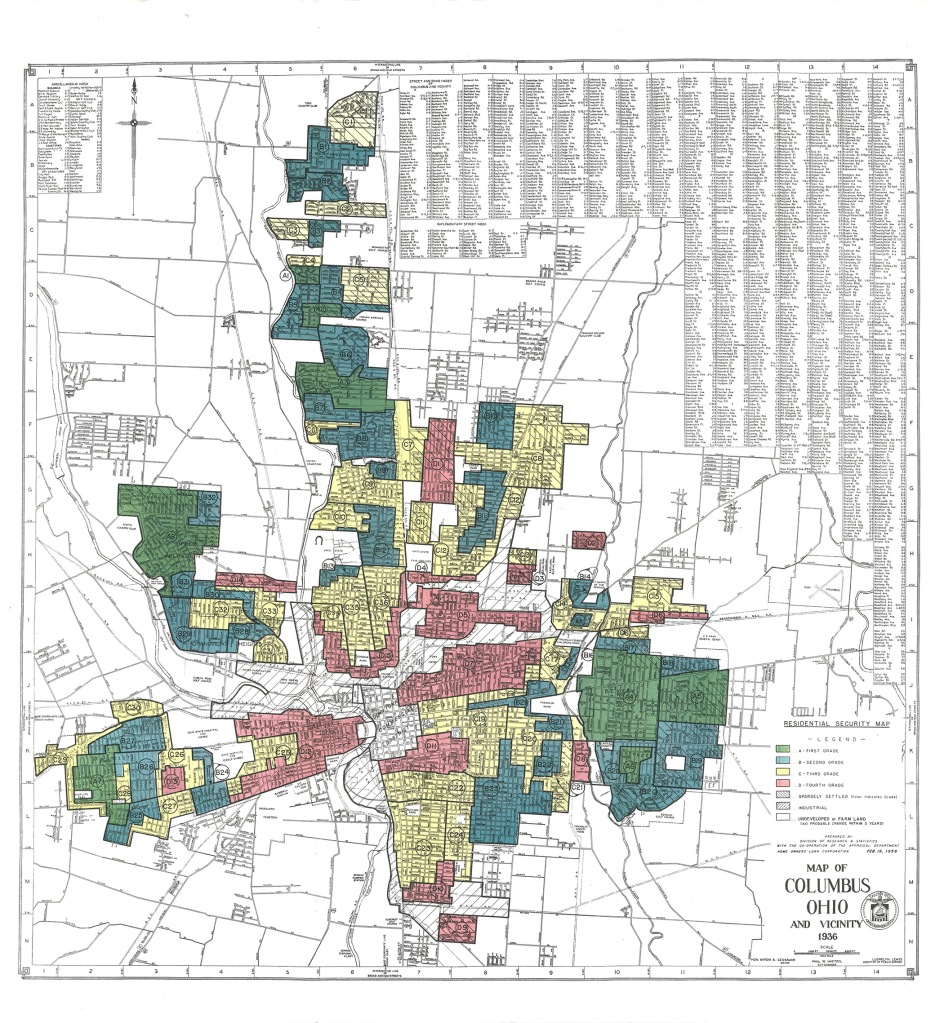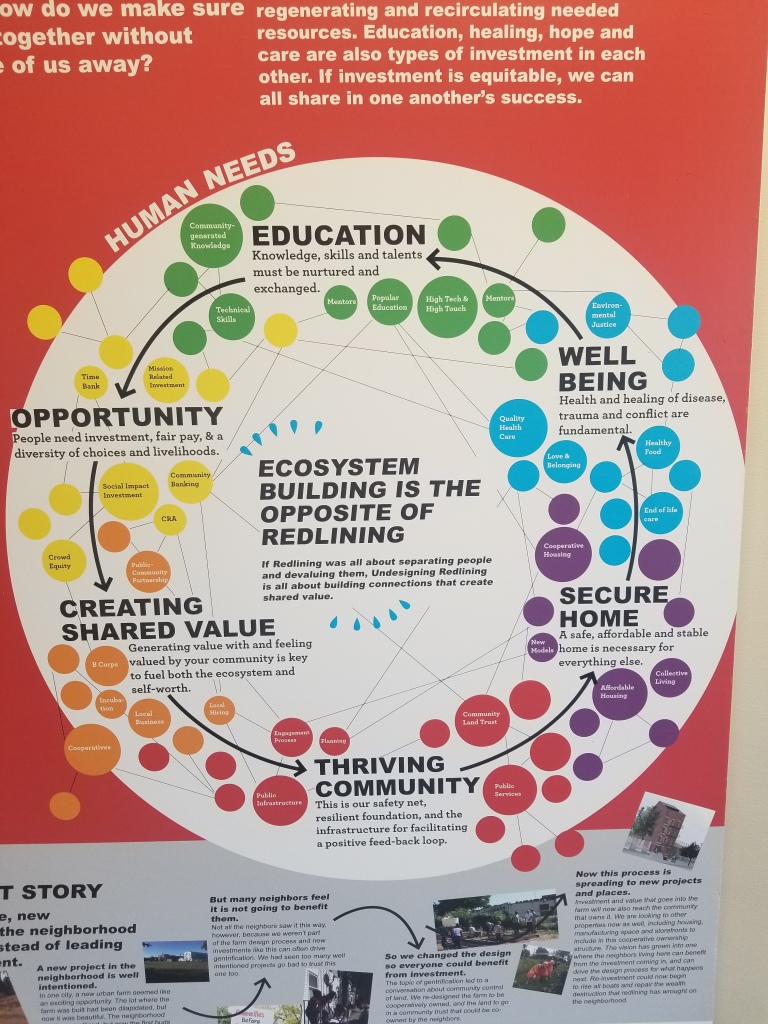For the last 6-7 years I’ve had a color printout of the 1930s-era redlining map of Columbus on the bulletin board in my church office. Like all good maps, it serves as a useful guide for understanding where we are and how we got here. In this case, it illuminates what areas of our city have historically received the most favorable terms for investment (green areas) and which have been denied (red areas), with race as a key determining factor. (Blue and yellow areas were in between, considered “Still desirable” and “Declining,” respectively.)

Being a property owner has been an education in this regard. When you’re entrusted with a loan to purchase an asset that will increase in value, like a house, you build wealth. Over time, you can use that accumulated wealth as collateral for other investments. This gets passed down generationally, and so on. Housing is entangled with schools, environmental health, crime and safety, walkability and access to transportation, etc. Loans play a big role in all this. It’s how the system works, or doesn’t.
It’s hard to see in the above image, but our church building at 35 Oakland Park Ave was in a “Most desirable” green zone, area A3. The neighborhood continues to be affluent.
Two weeks ago I went on a pilgrimage downtown to the Main Library to walk through the display Undesign the Redline.

The display is a kind of map in itself, composed of five large panels (Panel Three shown above). This panel outlines a history of housing practices and policies in the US. A parallel timeline tracks movements of empowerment and stories of resistance. A concluding list of lessons learned includes: “Almost all the policies cited here as detrimental were proposed as solutions to other problems: Redlining, Urban Renewal, Planned Shrinkage, War on Drugs, Broken Windows).”
Panel Five includes a proposal that the opposite of Redlining is “Ecosystem Building.”

What makes interaction with this material a pilgrimage and not just information gathering, I wonder. A pilgrimage is an interior journey made outwardly, or something like that. A pilgrimage also provides a new set of eyes with which to view and act within the familiar.
I’m grateful to the researchers and storytellers and institutions engaged in truth telling around this history of redlining. That map on my office wall reminds me that every home and neighborhood has a story, if we’re willing to see it. I’m treasuring the homework assignment of ecosystem building from this pilgrimage and include my internal ecosystem as part of that call.
Undesign the Redline will be displayed at the Main Library until March 15, after which it will move to Capital University for several months.
Joel

